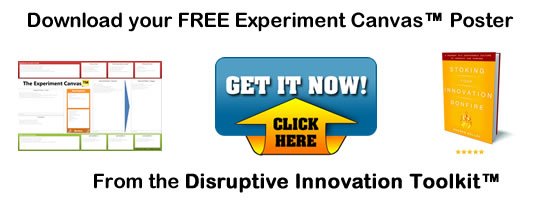What is a “Fail Fast†Organizational Culture?
 Editor’s note: This is the first of a series of blogs, by Janet Sernack, on cultivating a fail fast culture.
Editor’s note: This is the first of a series of blogs, by Janet Sernack, on cultivating a fail fast culture.
I recently met with a client, who was seeking our ideas, information and input towards what might be involved in cultivating a “fail fast†organizational culture. It was an interesting discovery conversation, causing me to explore what needs to be in place to create permission, vulnerability, safety, courage and trust for the deep learning’s that mistakes and failure provide in advancing creativity, invention and innovation?
How could developing a “fail fast†culture help organizations unfreeze, survive, flow and flourish with the current levels of fear, ambiguity, uncertainty, volatility and instability in 21st century organizations?
What does “fail fast†mean in its original context?
In software development, the intention is to discover and detect where a potential problem might occur in the overall process, to speed it up and minimise time and costs.  The focus is on iterating and steering the project to success as it develops, rather than creating a lot of software before showing it to the end user – to minimize the risks involved in their acceptance of it. This enables developers to test their products and get immediate customer feedback, to ensure that what is being developed is in tune, and aligned with what customer’s think they might want, or want.
It is a useful and important agile concept, that allows developer to reduce the time lag and costs in detecting the opportunity, problem or the failure, and relaying the detection back to the responsible developer to iterate and pivot the next phase of its development.
How can failure be perceived as feedback and learning?
Working this way teaches people the value of developing customer intimacy and an empathic understanding as to what constitutes value in their eyes. It is an ongoing learning process where feedback, whether positive or negative, enables people to adapt, respond and improve quickly.
Learning from this agile way of working, it is one way of taking the “emotional heat†out of “failure†as an emotional reaction, a visceral experience and perpetration against someone.  Because “Failure is always a demoralizing and upsetting experienceâ€.
There is an opportunity to potentially reframe failure as “feedback†and as a “learning process.†To enable people and organizations to iterate, pivot and continuously improve through intentional behaviour, system and artefact changes – in ways that provide increased value that people, and customers appreciate and cherish.
What is the scientific rationale for failure?
Scientists operate under the basic and rational principle that that get things right by analysing what went wrong.
Stuart Firestein, in his book “Failure: Why Science Is So Successful†states that:
“Virtually all of science is a failure that is an end in itself. This is because scientific discoveries and facts are provisional. Science is constantly being revised. It may be successful for a time; it may remain successful even after it has been shown to be wrong in some essential way. That may seem strange, but good science is rarely completely wrong, just as it is never really completely right. The process is iterative. We scientists hop from failure to failure, happy with the interim results because they work so well and often are pretty close to the real thingâ€.
What gets in the way of people applying this rationale?
Growing up in western civil societies and school systems, we learn to see failure as a mistake, as a shortcoming, stupidity or imperfection that we are responsible for and ashamed about.
We often feel that we must make excuses about it and apologise for it.  In fact, we live in world where governments fail, relationships fail, businesses fail – so none of these failures are a cause for celebration, they are merely signs of ideas in progress.
According to Ed Catmull, president of Pixar and Disney Animation; “Mistakes aren’t a necessary evil. They aren’t evil at all. They are the inevitable consequence of doing something new (and as such, should be valuable; without them, we’d have no originality).â€
- Visceral reactions to failure

When we fail, we unconsciously sink into a series of reactive responses, that engage us neurologically and emotionally resulting in a range of irrational cognitive (thinking and feeling) distortions, which usually involves disappointment, confusion and shame.
We then move away from and avoid solving the problem because of these pervasive un-resourceful states and act defensively, which usually involves laying blame, making justifications, excuses, and operating from denial.
The very opposite of what most scientists are programmed to do, which is to get things right by analysing what went wrong!
This is often a very useful iterative process, and according to Ed Catmull, who has failed more times than we can imagine, it’s important; “To disentangle the good and the bad parts of failure, we have to recognize both the pain and the benefit of the resulting growth.â€
- Be-ing wrong and judged
 When we are made to feel (by our own internal processing or externally by others) “wrong†we know that we both self-judge and that others will make a judgement about us. Many of us are concerned about how others see and approve of us, and like to compare ourselves to, and please others.  When we find ourselves being judged in this way, especially for making any kind of mistake, that people make unfair and often generalized and distorted assessment of us and then delete all our other abilities.
Being judged questions and invalidates our competence “I/you screwed up†voids our confidence “I/you just don’t have it in me/ you†and minimizes our capacity to successfully complete the job or task at hand “I/you am/are a wimpâ€.
- Be-coming the failure
This affects us deeply and in effect, we “be-come†the failure, feel violated, disappointed ashamed and fearful of its punitive consequences; being fired, disregarded for promotions and special projects or being required to take the blame and “fall on your swordâ€.
How can we start to allow failure to be-come the “norm�
- Be-ing strategic and systemic
Creating this type of culture requires boldness, courage, commitment and determination by the Board and the Executive Team to frame and lead the way forwards, and push the envelope towards the desired positive future state.
At Pixar, “failure is a manifestation of learning and exploration†in fact, “if you aren’t experiencing failure, then you are making a far worse mistake: you are being driven by a desire to avoid it/ And for leaders, especially, this strategy-trying to avoid failure by outthinking it- dooms you to failâ€.
- Be-ing purposeful and meaningful
 It involves investing in a longer term, strategic and systemic perspective of the organization, that inspires, motivates and pulls people towards and creatively engages them in the possibility of making their, and their customers worlds a better place.
- Uncoupling failure
 The focus is to then be willing to uncouple their own fears of failure and risk adversity, to develop self-awareness and self-mastery to confidently, empathically and authentically lead the desired changes and “create an environment in which making mistakes doesn’t strike terror†into people’s hearts and minds.
- Learning, teaching and coaching people
 It is then possible to teach and coach others how to uncouple their fears towards failure and its negative consequences, to support and enable people to “normalize†failure by;
- Developing tolerance to surprises and problems and shift the way people think and feel about pushing the envelope, making changes and taking smart risks.
- Cultivating the generative discovery skillset that sees, responds to and solves problems by being empowering and enabling people to be, think and act differently.
- Support them to recover, renew and replenish their hearts and minds when they make mistakes and fail.
Doing this builds people’s trust, receptivity, curiosity, participation towards taking responsibility for developing a “fail fast†culture and the innovation agility to birth it, operate and sustain it successfully.
 At ImagineNation™ we can help you unleash the innovation potential of your people by;
- Coaching leaders to cultivate innovation agility
- Designing customized blended learning solutions
- Creating the environment for innovation to flourish
- Implementing innovation in your context
Ultimately, we partner with you to ensure your people out innovate your competitors.
image credit: spreadshirt.com
Wait! Before you go…
Choose how you want the latest innovation content delivered to you:
- Daily — RSS Feed — Email — Twitter — Facebook — Linkedin Today
- Weekly — Email Newsletter — Free Magazine — Linkedin Group
 Janet Sernack is an ICF ACC accredited executive coach, corporate trainer, group facilitator and culture and change consultant with some of Australia’s and Israel’s top 100 companies. She is the Founder of ImagineNationâ„¢ an innovation education company that provides innovation e-learning programs including The Coach for Innovators Certified Programâ„¢ experiential learning events including The Start-Up Gameâ„¢. Follow @JanetSernack
Janet Sernack is an ICF ACC accredited executive coach, corporate trainer, group facilitator and culture and change consultant with some of Australia’s and Israel’s top 100 companies. She is the Founder of ImagineNationâ„¢ an innovation education company that provides innovation e-learning programs including The Coach for Innovators Certified Programâ„¢ experiential learning events including The Start-Up Gameâ„¢. Follow @JanetSernack
NEVER MISS ANOTHER NEWSLETTER!
LATEST BLOGS
Three things you didn’t know about credit cards
Photo by Ales Nesetril on Unsplash Many of us use credit cards regularly. From using them for everyday purchases to…
Read MoreFive CV skills of a business-minded individual
Photo by Scott Graham on Unsplash The skills listed on a CV help employers quickly understand your suitability for a…
Read More


